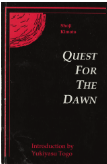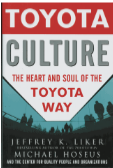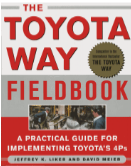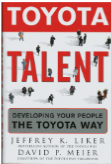

Michael N. Kennedy:
Product Development for the Lean Enterprise, Why Toyota's System is Four Times More Productive and How You Can Implement It,
The Oaklea Press, 2003, ISBN 1-892538-09-1. (254 pages, 155*235 mm)
Michael Kennedy describes the product development process of Toyota. We get to follow a crash team that is given one week to come up with ideas for saving a company that once was the industry leader but now face serious problems.
Each chapter of this novel is followed by a short discussion where the author quickly summons up, comments and enlarges the subject matter. In this way it becomes really exiting and much more appetizing then if the Toyota product development had just been described in strict formal way.
Because, as you have guessed, the answers are found at industry leader Toyota. The engineers at Toyota have an 80% efficiency, compared to 40% for Scandinavian companies and 20% for North American companies.
The potential for improvement is huge, but to utilize it a paradigm shift is necessary, just to apply new methods is not enough and this is the subject of the book.
Michael Kennedy´s message to american industry is: "change or die". He and Dr. Allen Ward, University of Michigan, have experienced enormous difficulties in finding acceptance for facts. Companies are really reluctant to improve their product development. For example the statistics for GM & Ford is terrible compared to Toyota and Honda. In 2003 the profit of Toyota was a record US$ 8 billions, and more than twice as big as GM and Ford combined.
Toyota´s product development has for cornerstones.
- Chief engineer - Automotive projects are managed (owned) by a chief engineer, who has an entrepreneurial character. He makes all the decisive decisions at integration points (milestones). Managers function as teachers for subordinates
- Set-based Concurrent Engineering - You keep alternative solutions alive as long as possible. Stuart Pugh-type diagrams of characteristic variables are used. Milestones are system integration points where the number of alternativs is reduced.
- Responsibility-based Planning & Control - Planning is pushed down to those who actually do the work.
- Expert Engineering Workforce - engineers are rewarded for being engineers not administrators. Contrary to American and Scandinavian industry Toyota still have a hierarchy based on engineering skill.
The Toyota paradigm and the description of it given in the book is very interesting and it is striking how much in common the Toyota paradigm have with Dynamic Product Development, a method, way of thinking or attitude, developed and described by professor Stig Ottosson in numerous articles and a textbook (in Swedish).
But DPD is not as coarse as the Toyota method, which operates at a higher hieratical level. I think that the two could easily be united and thereby strengthen each other.
Lean & lean product development
Jeffrey Liker & David Meier,
Toyota Talent: Developing Your People the Toyota Way
(Hardcover), McGraw-Hill Professional; 1 edition (1 Jun 2007),
ISBN-13: 978-0071477451, (240 pages, 232*156 mm)
John Seddon,
Freedom from Command and Control: A Better Way to Make the Work Work, (Paperback), Vanguard Consulting Ltd, 2003, ISBN 978-0954618308, (300 pages, 226*156 mm)
John Seddon är psykolog och har intresserat sig för i huvudsak call-centers och liknande serviceinrättningar. Vad han funnit när han applicerar tänkandet bakom Toyotas produktionsmetod (TPS) på serviceinrättningar är oerhört intressant och lärorikt.
Seddons observationer applicerade på alla slags organisationer som utför någon form av service (konsulter, banker, sjukvård, mm) kan ge miljardvinster genom att dagens slöseri tas bort.
Chefer mäter fel saker, styr på fel sätt och med fel mål, och saknar ofta kunskap om hur det värdeskapande arbetet går till. Högre chefer skall äga processerna, enligt Seddon, och de som utför det värdeskapande arbetet måste få styra och experimentera med hur de löser uppgiften. De måste få tillräckliga resurser (kunskaper, mm) för att i ett svep och utan uppehåll eller dröjsmål lösa uppgiften. Allt måste dessutom ses från kunden, konsumenten, användarens synvinkel.
Köp och läs på det att fjällen må falla från dina ögon. Du kommer inte att ångra dig.
Jeffrey Liker & David Meier,
The Toyota Way Fieldbook: A Practical Guide for Implementing Toyota's 4Ps
(Paperback), McGraw-Hill Professional (1 Nov 2005),
ISBN-13: 978-0071448932, (476 pages, 234*185 mm)
Jeffrey Liker & Michael Hoseus,
Toyota Culture: The Heart and Soul of the Toyota Way
(Hardcover), McGraw-Hill Professional; 1 edition (1 Jan 2008), ISBN-13: 978-0071492171, (288 pages, 229*163 mm)
Michael N. Kennedy & Kent Harmon,
Ready, Set, Dominate: Implement Toyota's Set-Based Learning for Developing Products and Nobody Can Catch You
(Hardcover), Oaklea Press (9 Jul 2008), ISBN-13: 978-1892538406,
(296 pages, 231*152*25 mm)
This is the follow-up to Mike Kennedy's Product Development for the Lean Enterprise. So, what's new? Well, Kennedy & Co have come to the realization that product developoment is a learning process (as can be learned elsewhere on this website) and that it is a question of making use of the latest gained knowledge, not to proceed until one has relevant knowledge, etc.
In order to produce and harvest the needed knowledge, Toyota has designed a knowledge management system that really works.
It is armed with these new insights that the hero saves the company from outsourcing and sell-out of unprofitable divisions. Because exactly as in the previous book, the ideas have been dramatized and are presented in the form of a business novel to which has been added a couple of case stories.
Not as good as the previous book. One reads about what the persons think and say, but not about what the essence of Toyota's method really is. That one must find elsewhere. It doubtful whether one should read this book. It is probably better to spend ones energy on one of Liker's books.
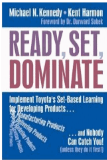
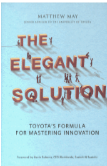

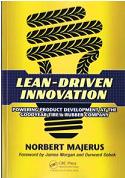
Norbert Majerus,
Lean-Driven Innovation
2016, CRC Press, ISBN 978-1-4822-5968-1. 463 pages 177*254 mm
Many words, very little description of methods and tools. Leaning a bit towards lean production. Stressing the customer and forgetting the user. It took Goodyear 10 years to reach what we achieve in 2.5-3 years in Swedish LPD.
If you are completely new to LPD, then there are perhaps better books. However, if you are a seasoned LPD transformation general, then you will nod in agreement to many of the statements.
Katherine Radeka,
The Mastery of Innovation: a field guide to lean product development,
CRC Press, 2013, ISBN 978-1-4398-7702-9, (245 pp, 241 x 162 x 21 mm)
I had expectations, but this book is rooted in beliefs in waste reduction, and the stressing of the customer, not the user, etc. In short a linear world.
There are lots of examples, one after the other, of companies that have embarked on the "lean" route. The descriptions are to sketchy to be of any real use. It is not sufficient to be told that A did this and the outcome was B. You have to know what the situation looked like, why they did what they did, what they hoped to achieve and why it succeded or not.
I would pass this book by, if I were you.

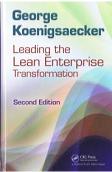
Allen C. Ward,
The Lean Development Skills Book,
1st edition, 2002, Ward Synthesis, Inc. ISBN 0-9727340-0-7. (69 pages 158*197 mm)
Allen Ward has written one and a half book. This is the one, and the half is the manuscript that his pupil Dr. Sobeck compiled and published 2007.
This is a small, thin, book, bur it covers a large area. The language is precise and short and if you read in too hastily a tempo, you risk missing the important message. You should read slowly and ponder each sentence deeply. Perhaps reading of this book requires some experience from product development and familiarity with the subject to fully appreciate the deep knowledge that Dr. Ward tries to convey. This book is required reading!
George Koenigsaecker,
Leading the Lean Enterprise Transformation
2016, CRC Press, ISBN 978-1-4398-5987-2. 242 pages 160*242 mm
Written by someone who has been there. This book conveys insights, such as, "As our culture become stronger and more unique to Watlow, we have found it more difficult to hire leaders from outside. ....candidates for leadership positions who were promoted internally are four times more likely to be successful in their next role than someone hired from the outside." Recommended reading.
Shoji Kimoto,
Quest for the dawn,
Dougherty Co (1991), ISBN-13: 978-1878150011, (253 pages, 228*152 mm)
A cativating book about the struggle of Kiichiro Toyodas for the creation of a Japaneese atomobile industri.
Kiichiro was a university trained engineer, son, and heir to Sakichi Toyoda, one of the great inventors of Japan and founder of Toyoda Automatic Loom Company.
Kiichiro was a creative and very skilled design engineer. It was he who finetuned his fathers greatest inventions and made them really usefull. But he was also a great entrepreneur. Kiichiro was therefor well placed for starting a car manufacturing business with funds from the family's very prosperious textile machine company.
Then came the war and Toyota made trucks, not cars. After the the war this was seen by the occupatin force as a war contribution and Toyota for a time had real finacial problems.
Their salvation came in the form of the Korea war, which created a hughe demand for Toyota trucks that hade earned a reputation for being tuff and dependable.
After the Korean war, car manufacturing took off, and the rest is history. But then Kiichiro was already gone. The founder of a Japaneese car industry died from a broken aneurysm in the brain on mars 27, 1952. He became only 57 years old, but achieved more and overcame more obstacles than most would in several lifetimes.
This is recommended reading for everyone that is the least interested of Toyota production and product development methods.
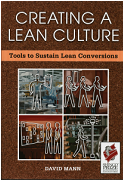
David Mann,
Creating a Lean Culture: Tools to Sustain Lean Conversions,
Productivity Press, 2005, ISBN-13: 978-1-56327-322-3, 224 pages, 251*175 mm)
David Mann has a production background and has skrvit a well-structured and readable book on lean production.
In an exemplary way he explains what standardized work is and why it is used, how the work is organized, how and why to use visual planning, and much more.
One interesting conclusion is that the Toyota Production System (TPS ) and its successor is on the one hand the perfection of Scientific Management, but also an unstable system that must be monitored and controlled in every moment in order not to fall down to become an ordinary production system, characterized by " firefighting " and other traditional problems.
The book is well worth reading if you are not particularly familiar with production issues and want to understand TPS management. Recommended.
Darius Mehri,
Notes from Toyota-land: an american engineer in Japan,
(hardcover), ILR Press, 2005, ISBN 978-0-8014-4289-6. (231 pages, 233*161*20 mm)
Notes from Toyota-land is the book you must read if you are the least bit interested in the Toyota Production System and Lean Product Development. Darrius Mehri is an engineer from the United States who worked for three years at a company of the Toyota Group in the late 90s.
Mehri describes in detail how it is to work in Japan, how unions work or not work, how hierarchies control how all hold tight to their information for fear of having their ideas stolen, and how false the Western picture is of the alleged decision-making through consensus.
Furthermore, Mehri describes how employees fresh out of college dependent on their managers' benevolence to teach them to perform their duties, because Japanese universities neglect to give their engineering students the necessary practical skills.
In summary, this is a very readable book that you must read. Recommended .
John Seddon,
Systems Thinking in the Public Sector,
Triarchy Press, 2008, ISBN 978-0-9550081-8-4. (214 pages, 244*169 mm)
John Seddon unveils many truths on what could be called service sectors. This is an eye opener. Must read.
Matthew May,
The Elegant Solution; Toyota's formula for mastering innovation,
Simon & Schuster UK, 2007, ISBN-13: 978-1-184737-027-3, (236 pages, 233*152 mm)
This book offers nothing new for those who are well read in the area of product development, or, as is now increasingly said, innovation technology.
The style is jerky, as a copywriter on amphetamines. Everything good is lean and lean is always good. The book is written for an American audience with American culture and therefore the author occasionally miss the point with Toyota ideas. Sometimes we are served absolute errors.
But on page 193 the author hits the mark when he writes: So start looking at the world through the eyes of the user. Start listening to the frontline.
Symptomatically enough, this is the first time the author writes user, otherwise there is talk always about the customer. But absolutely right , it is that one should always study the system from the user's point of view. And all product development should have a user focus.
Although the book improves at the end, Chapter 14 is not so bad, I still cannot recommend this book.
Clifford Fiore:
Lean Strategies for Product Development: Achieving Breakthrough Performance in Bringing Products to Market (Paperback), Amer Society for Quality (Jul 2003),
ISBN-13: 978-0873896047
(94 pages, 221*152*6 mm)
This is a thin little booklet of a book, 62 pages of text + appendix. When you open the book and find that it was written in the form of a stressfully hearty dialogue between Ken (seller) and Brad (buyer) you get the urge to put the book aside
But what is Fiore's theses? Well, value stream is defined as ... the information flow from the receipt of technical requirements from the customer to the completion of blueprints... A mighty narrow and old-fashioned approach to product development.
Further, Fiore says that Lean Product Development (LPD) is characterized by:
1. Value in the eyes of the customer
2. The elimination of waste
3. The Value Stream
4. Flow
5. Work on what's important
6. Concentrate the work
7. Leverage knowledge.
The latter appears to involve the use of the appropriate level of expertise, learn as much as you can, and capture the knowledge you have. Thus, quite far from what we today understand with LPD, at least in Sweden.
The book is not recommended.
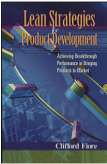
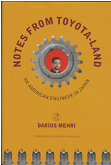
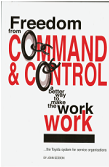

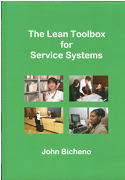
John Bicheno
The lean toolbox for service systems,
PICSIE Books, 2008, ISBN 978-0-9541244-4-1. (294 pages 177*254 mm)
JOHN BICHENO has accumulated a large amount of tools that are useful if you want to create and maintain a lean service of any kind.
It is worth noting that Bicheno writes: "The classic 'Learning to See' Mapping Tool is seldom appropriate in custom environments", which is so true, so true.
The most one can wish for is included in the book. Are there any blemishes? Yes, Bicheno writes that "Stage/Gate represented a great advance ... when it was introduced". We now know that the stage-and-gate methods are among the most damaging one can have in product development. More serious is that Bicheno does not distinguish between 'customer' and 'user' or 'client'. It is comparable not to mention steel 1312, aluminum 4120, etc., but only say metal.
The book emphasizes systems thinking and related objectives, flows and events. In contrast, Bicheno does not treat the accumulations (of capital, commodities, knowledge, etc) that give rise to flows. Feedback loops, which of course is essential for a well-functioning system is mentioned only in passing. Overall, the book is a fact-filled compilation of lean methods and can be compared to a reference book. Recommended!
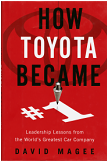
David Magee,
How Toyota Became #1,
Portfolio, 2007, ISBN 978-1-59184-179-1. (239 pages, 235*152mm)
There are here and there in the book data that if they are correct, are very interesting. But it is a long desert walk between the interesting pieces.
For the most part, the book is a tiresome repetition of superlatives. Toyota described so overwhelmingly positive that you sometimes wonder if the author is serious.
This book you can very well do without.
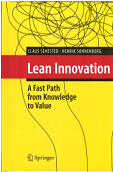
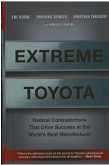
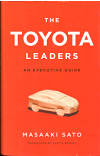
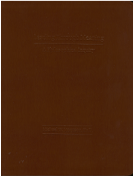
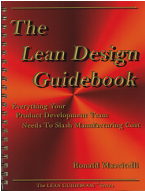
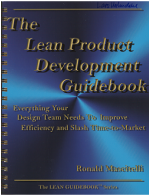
Claus Sehested & Henrik Sonnenberg,
Lean Innovation: a fast path from knowledge to value,
Springer, 2011, ISBN 978-3-642-15894-0. (186 pages, 241*162 mm)
A nice book. Maybe a little unstructured. One asks oneself after the reading: What was the author's message?
What is said is "right" but not sensational. If you have acquired the Swedish interpretation of LPD, the book contains nothing new, but some that is a bit old. We have in several Swedish lean companies in many respects passed the stage described in the book. But of course, most still have much to learn from this book.
Emi Osono, Norihiko Shimizu, and Hirotaka Takeuchi,
Extreme Toyota, Radical Contradictions That Drive Success at the World's Best Manufacturer,
Wiley, 2008, ISBN978-0-470-26762-2. (306 pages, 235*158mm)
Masaaki Sato,
The Toyota Leaders; an executive guide,
Vertical, 2008, ISBN 978-1-934287-23-1, (335 pages, 222*143 mm)
Michael Morrison,
Leading Through Meaning, A Philosophical Inquiry,
University of Toyota, 2003, ISBN 0-9741923-0-9, (191 pages, 248*190 mm)
Mascitelli, R.:
The Lean Design Guidebook: Everything Your Product Development Team Needs to Slash Manufacturing Cost,
Technology Perspectives; New title edition, 2004, ISBN-13: 978-0966269727
(320 pp 277*206 mm)
Mascitelli, R.:
The Lean Product Development Guidebook: Everything Your Design Team Needs to Improve Efficiency and Slash Time-to-Market,
Technology Perspectives, 2006, ISBN-10: 096626973X,
(310 pages, 274*213 mm)

Allen C. Ward:
Lean Product and Process Development,
(Paperback), Lean Enterprise Institute (2007), ISBN: 978-1-934109-13-7. (209 sidor, 280*214 mm)
This book was published posthumously in 2007. It was a great loss to the LPD-world when Allen Ward was killed flying his self-built aircraft in 2004.
Al Ward was an interesting person. He went to university, received a BA in history, became US Army officer and advanced to the rank of captain. He was trained partly in US Army Rangers (which is almost equal to a Swedish jaeger unit, but still …). Al studied engineering and received a BSc ME, and left the army to become a doctoral candidate at MIT.
Research into artificial intelligence and "automatic design" led him to what we later call set-based design.
After MIT Ward became professor at University of Michigan (UM) that is only a stone's throw from Detroit's automotive industry.
UM ran a research project in which they studied the Japanese auto industry, mainly Toyota. Al Ward became one of the leading researchers in this project. At Toyota, Al was found what he long sought; namely, a company that uses set-based design.
After a few years Ward left UM and became an entrepreneur, designer, and owner of a company that developed and manufactured special machines. Here Al got to transform his ideas into practice.
Al Ward visited Toyota several times, starting in 1993, with his wife Yasuko Ward as an interpreter. Ward's understanding of Toyota is based on these visits and approximately 100 interviews with Toyota engineers.
What he learned at Toyota, he merged with the theory of maneuver warfare and direct leadership, the training he had received as a Ranger, and his own ideas about set-based design. The result is described in this book, and it has striking similarities with a Swedish invention, namely Dynamic Product Development (DPD). DPD was created by Professor Stig Ottosson, also a former army captain, scientist, and entrepreneurs.
Ward begins by stating that product development (PD) is about designing the future value stream. Furthermore, PD is a learning process where you have to learn faster than the competition. Other books about LPD treat the subject as if it is just a matter of need-project, but Ward is also trying to cover want- and wish projects.
It is important to use ones time to create value or useful knowledge. But knowledge can be lost, especially at hand-overs. It can be scattered and sometimes it does not exist at a point where it would be useful. For instance when one takes a chance and hopes for the best, instead of acquiring knowledge to base ones decision on.
In addition, PD projects should be led by an Entrepreneurial System Designer or Chief Engineer as they are called at Toyota Motor. Ward argues for the use of trade-off curves and he emphasizes the importance of rhythm in product development, and much, much more. Read yourself and you'll see!
The book is warmly recommended. This is obligatory reading.
Durward K. Sobek & Art Smalley,
Understanding A3 Thinking: A Critical Component of Toyota's PDCA Management System
(Hardcover), Productivity Press (12 Mar 2008), ISBN-13: 978-1563273605,
(184 pages, 231*155*15 mm)
A small book with a lot of unnecessary text. Just as American management books usually are.
The three basic forms of A3 reports are discussed with examples and exercises. The quintessence is that the reports should be concise and to the point without undue ornamentation and exactly what you get if space is limited to A3.
At the end of the book we learn that since laptop computers made their debut at Toyota in the mid -90s reports often take the form of one, two or three A4. So it was with the matter. Now, should you buy the book? Maybe, if you feel very unsure of report writing, but not if you already write concise and clear text. Then you have no problem migrating to A3 format.
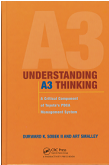
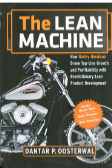
Dantar P. Oosterwal
The Lean Machine: How Harley-Davidson Drove Top-Line Growth and Profitability with Revolutionary Lean Product Development,
Amacom (1 Feb 2010), ISBN-13: 978-0814413784. (254 pages, 231*160 mm)
Dantar Oosterwal is now a consultant, but was previously product developer in the automotive industry. Here he got his experience in traditional product development.
When Oosterwal began working at venerable Harley-Davidson, the company was doing fine. A decade earlier it had saved itself from bankruptcy, and now they worked at full speed catering to the enormous craving for motorcycles. Simple math showed that the current production rate would reduce demand in just a few years and Harley-Davidson would have to shrink his suit. How should they deal with the new threat?
Harley-Davidson found its way to LPD and through James Womack they came in contact with Allen Ward. Another of our famous persons was Takashi Tanaka, who helped with the design of the visual planning of development projects.
Oosterwal read Ward's book from 2002. Then followed a dialogue between Ward and Oosterwal that came to shape the latter's thinking in a decisive way. With Oosterwal in line for a major restructuring work, introduced the Harley-Davidson dialect LPD. How good was it? Well, it was, depending on how you count, about 4.5 times better. Not so bad!
The book is highly recommended.
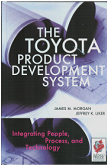
Morgan, J. and Liker, J. K.:
The Toyota Product Development System: Integrating People, Process and Technology,
(Hardcover), Productivity Press (25 Mar 2006),
ISBN-13: 978-1563272820. (400 pages, 231*152*25 mm)
For many, this is the standard work on LPD. The book is based on Morgan's thesis that deals with a comparison between the evolution of body-in-white of Toyota and Ford Motor Company. The book is therefore quite a lot about body development, and how Toyota develops cars, just as the title suggests.
This has both advantages and disadvantages. The advantage is you get a picture of how Toyota develops cars and the downside is that LPD is bigger than that. What should you do when you develop other consumer products, OEM products, etc? Morgan & Liker says nothing about that. In addition, Toyota is not the best at everything.
Several things, such as obeya rooms were used in projects by me, before Toyota took up the idea. In this case we were in Sweden ahead of Japan.
A strength of Morgan & Liker is that they describe the product development as a socio-technical system from three perspectives: people, processes and tools /methods.
The latter two are easy to understand, but the first, people, is trickier, given that we get one for us foreign culture (Japan) described through the filter of another foreign culture (USA). One may wonder how much is misinterpreted and how much is concealed in the contact between the American guests and the Japanese hosts.
Anyway, the book deserves to be read.
Lars Holmdahl:
Visual Management in Lean Product Development,
ISBN 978-91-979196-1-6. (145 pages, 187*247 mm)
From the books cover:
- Make it visible and trust your people, that's what the Toyota Chief Engineer said when asked what their product development was all about. Actually, trust is also the cornerstone of Scandinavian Management; to the extent that I can trust my people I don't have to know all that's happening in the company.
How do you build trust? Well, making information visual is a good start. For example by installing visual planning boards, building project rooms, and project dashboards, relying on simple one-sheet reports for knowledge capture and dissemination, and other visualization tools as presented in this book.
Then strengthening feedback systems, by actually applying Andon, by using knowledge gap management, interface handling, and noise management. And acting upon what you learn.



